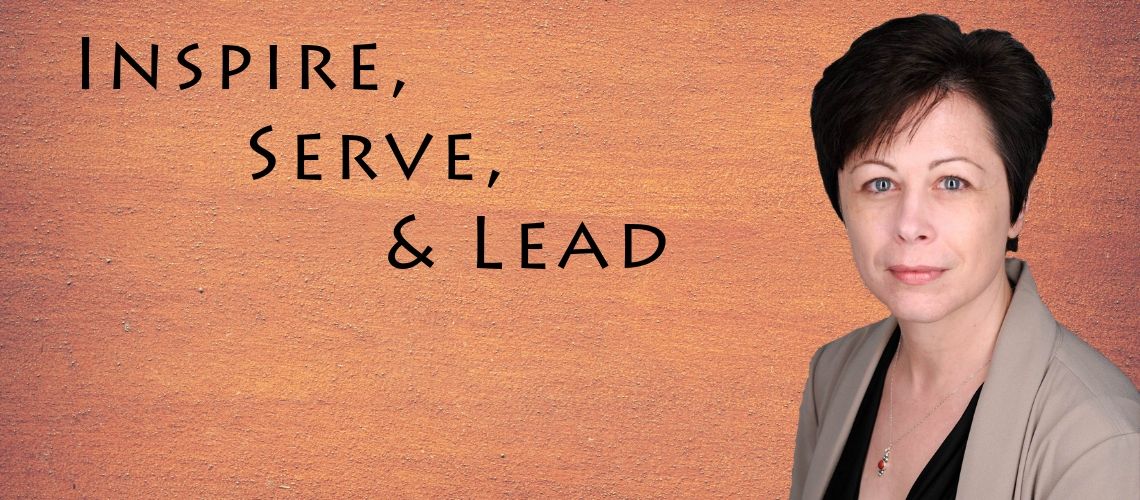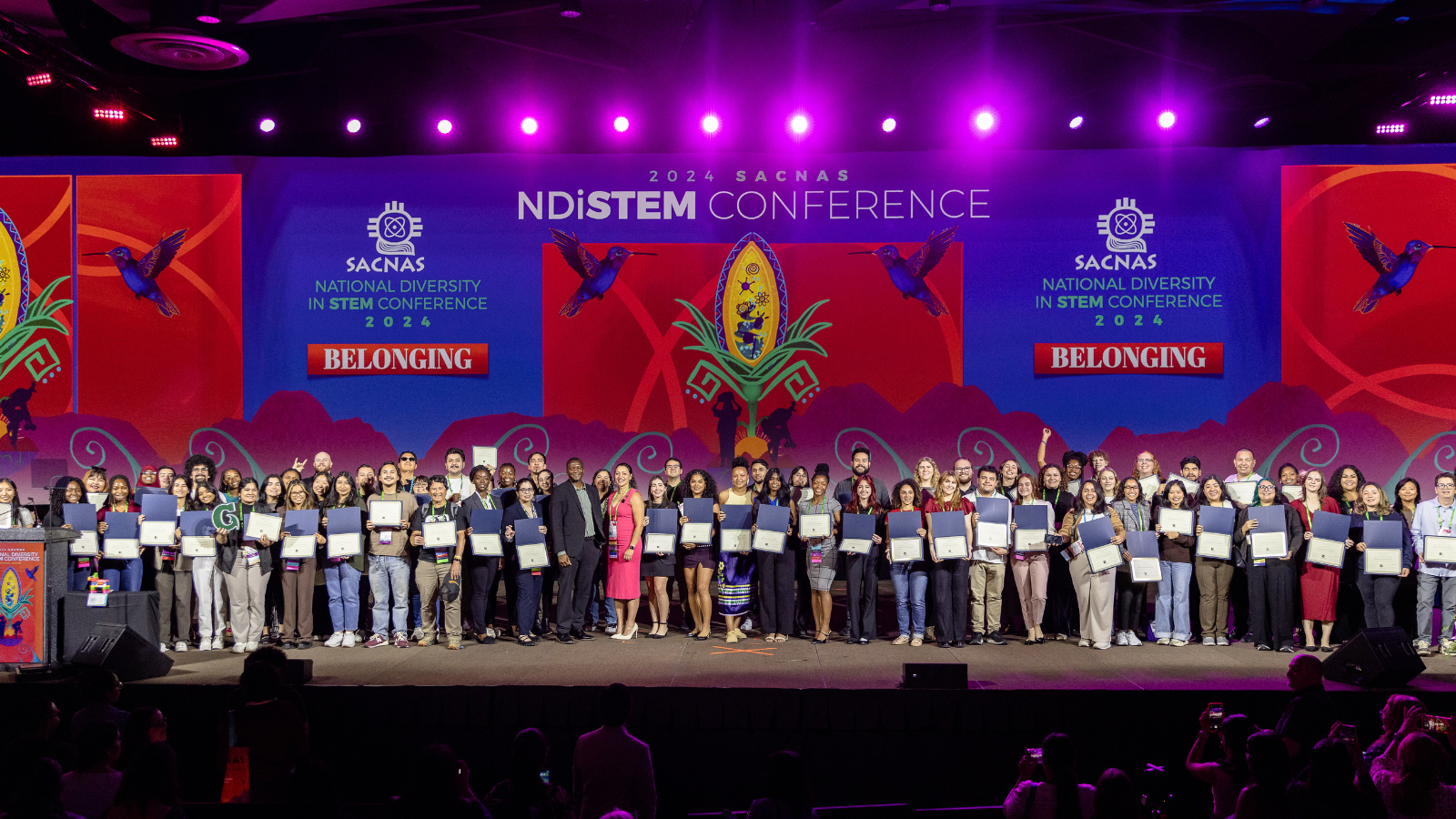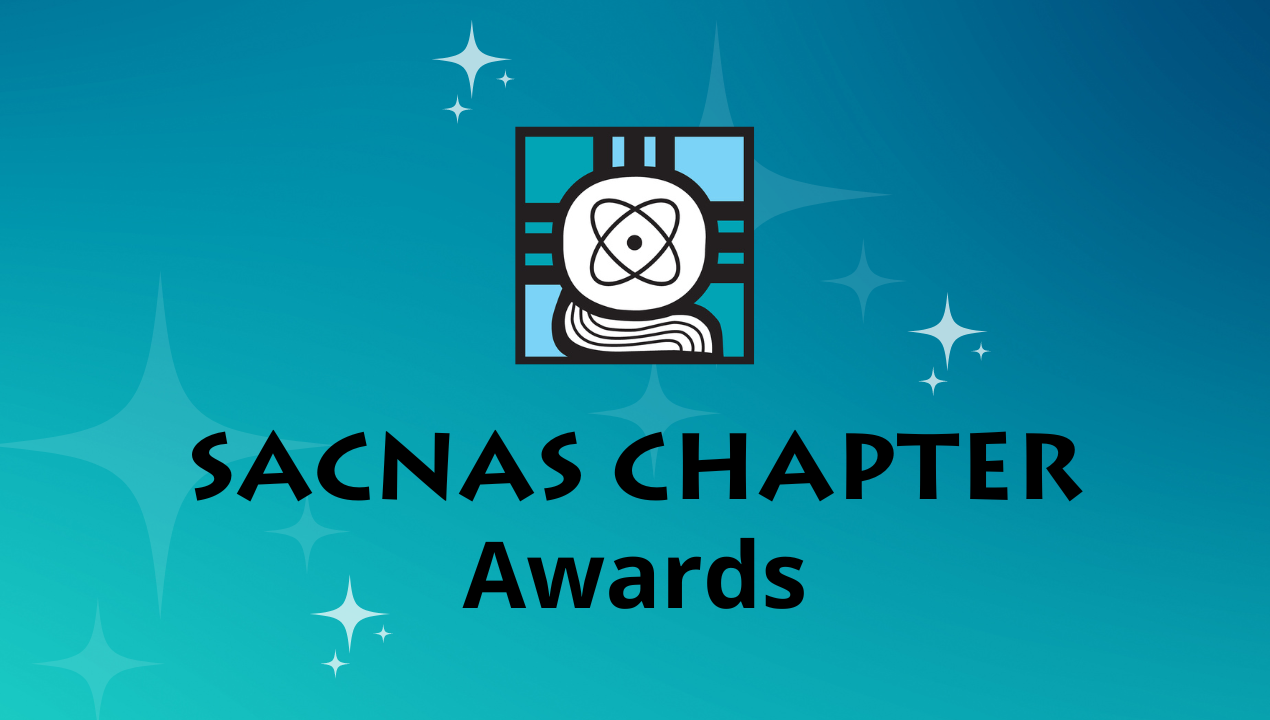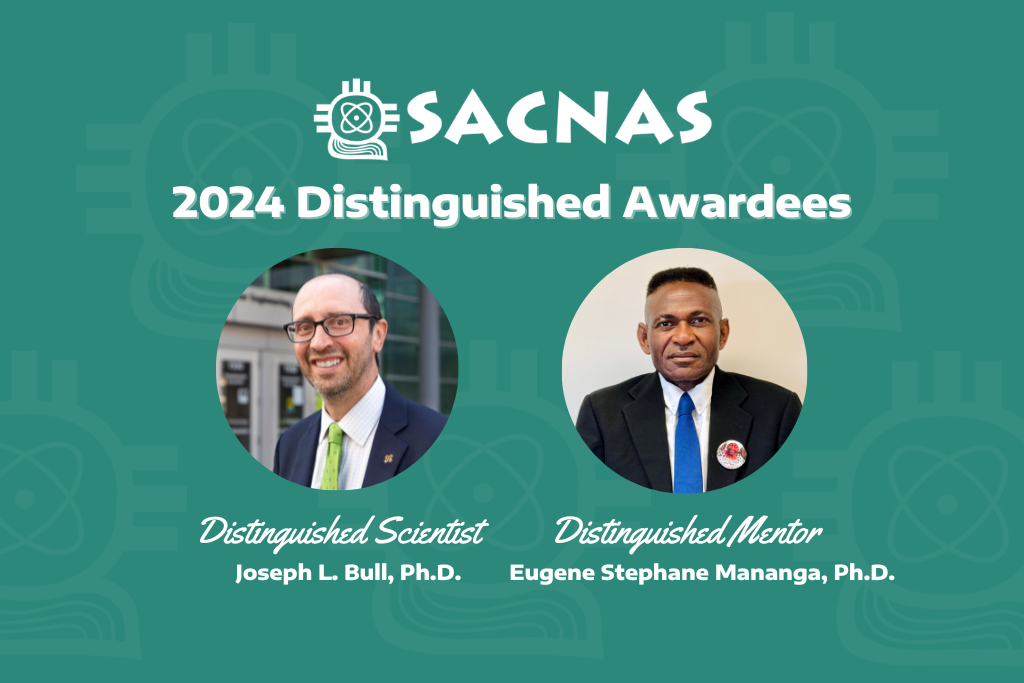The first time board member Roberta Pokphanh, PhD (Cherokee) attended a SACNAS conference was a pivotal moment in her career. As she watched students present their research and explore graduate school opportunities, she discovered something amazing – the SACNAS family, a community that nurtures diverse scientists by celebrating science and culture. At SACNAS, she found a place where you don’t have to cross the boundaries between familia and science, where background and work are integrated and embraced.
Roberta’s involvement with SACNAS grew over time, and she served on the local organizing committee for the conference as SACNAS established a new model of university sponsorship. Encouraged by her mentor, former SACNAS president Dr. Marigold Linton (Cahuilla-Cupeño), Pokphanh applied to the very first SACNAS Leadership Institute. The Linton-Poodry SACNAS Leadership Institute (and later, the Advanced Leadership Institute) gave her tools and community to do meaningful work in higher education. But when her career took a new turn, attendance of the SACNAS conference was not possible. Those two years away were difficult; until another opportunity opened up – a chance to give back, through board service.
SACNAS board members serve our organization by setting the vision, staying true to our mission, and providing direct service, fundraising and leadership. Each person on the board makes a personal commitment to giving their time, talent and energy so that we can continue our mission to change the face of science.
Hear about what it’s been like to serve on the board in this Q&A with Roberta:
1. What are the responsibilities of being elected? Per your experience, what is the biggest role of the SACNAS Board?
I think prospective board members should be realistic and be ready to do some work! I knew going in that I needed to have the capacity to dedicate time and energy to prepare for meetings and contribute to committees. The wonderful thing is you’ll be in great company–it’s a passionate and engaged group of board colleagues.
The biggest role of the board is to keep the organization focused on the mission, vision, and values from an organizational governance perspective. This can be challenging, because we are energetic and creative, and there is so much SACNAS could do…. but we need to ask whether we have the resources to make it happen. Balancing a focus on core mission—mentoring the next generation of diverse scientists—with all of the activities we could engage in to support that mission… well, let’s just say it’s good I’m in a room with a lot of scientists who are used to being creative and clever with limited resources.
2. How much time and travel are involved/required?
The travel time is not that much in the world of higher education or for scientists accustomed to doing field work or serving on review panels. There are six board meetings a year—one every other month, with three of those in-person so that we can have richer conversations and build community. The others are by video call. Each board member must also chair at least one committee or subcommittee which are expected to meet on a regular basis. That’s some work, but not onerous. You’re also expected to attend the annual conference, but that’s a perk! Where else can you attend a conference that feels like family and includes a pachanga and a Pow Wow?
3. What do you feel are currently the most crucial issues for the Board and the organization?
Our funding landscape has changed. The big NIH grant that funded the conference for many years sunsetted, and we’ve started the process to adjust to a federal funding climate that will continue to change. It’s a critical and transformational time for the organization.
But, if there’s anything I know about our people is that we’re experts at this: resilience is in our DNA. I trust that we’ll do the work, find new funding models, diversify our revenue, and support the amazing staff we have to stay on mission.
Because it is a critical time, one thing I’m hoping to push for is more transparency to the membership from the board. I hope we can create modes of communication to the membership that makes the work of the organization more visible.
4. What qualities do you feel a Board member should have?
First, commitment. Commitment to our mission and our community. Commitment to the work. Second, embrace your skills and what you bring. Being on a board, you have to bring all of your skills to bear for the betterment of the group. For example, I’m pretty good at going to the white board and helping a group summarize and reflect on where they agree and where they need to focus more attention. That’s helped me to be able to reflect back to the board and move a conversation forward.
Additionally, my training in art history (yes, my PhD is in art history, not the sciences) taught me to look at both the details and the big picture at the same time. This can help me remind the board that sometimes we need to get out of the way of the details and let the staff do their jobs while we focus on direction and big picture.
5. How would you characterize the Board’s role in SACNAS? Should it be different in the future?
I know that the staff would like us to help broaden the SACNAS network beyond academia because faculty jobs are shrinking. The organization was founded 46 years ago to support faculty advancing in their careers and encourage students to go into academia, but in the last 30 years, the job market has dramatically changed. STEM doctorates today need to be prepared not only for academic research, but also to think about work in industry, federal agencies, NGOs, or as entrepreneurs. SACNAS must help prepare our members to succeed in those jobs, as well. As an “alt-ac” – or as I like to call it, “PhD but not faculty” myself, I know that people who are doctorally-trained possess skills that our communities and our country need, like the ability to identify, research, and solve problems.
6. Why is it critical for board members to help organizations raise money and secure resources?
For many of us, our families weren’t talking about fundraising or philanthropy over the dinner table, so we’re less comfortable in that space. But fundraising and growing resources are what most organizations look to a board to do; to make connections and form relationships, hoping people will identify with and support the mission. We do need to diversify financially, so there’s a role for the board to play there. It’s an area that we are working on because our community must come to it in our own way. My scientist colleagues know grants really well; we have great ideas, we tell our funders how we are going to do them, then we do it. Other aspects of fundraising are a little less familiar. But, with the help of our dedicated staff, we are learning quickly.
7. What is one piece of advice you would give someone interested in joining the SACNAS Board?
First, don’t be afraid to get involved; you have great gifts and skills to share! If you’re early on in your career or education, start by getting involved in your campus chapter. Review abstracts or serve as a judge for poster presentations. If you are a bit more advanced in your career, join a committee, and then– when you have the experience and you think you’re ready — GO FOR IT. Tell people about why you’re interested and what you’re passionate about. And then be prepared to roll up your sleeves!
[su_button url=”https://sacnas.org/board-nominations/” target=”blank” background=”#789d4a” size=”10″ center=”yes” icon=”icon: community”]Learn More About Board Nominations[/su_button]
About SACNAS
For more than 45 years, SACNAS has served as an inclusive organization dedicated to fostering the success of Chicano/Hispanics & Native Americans, from college students to professionals, in attaining advanced degrees, careers, and positions of leadership within STEM.
Today, the organization serves a growing community of over 20,000 supporters, 6,000+ members, and 115+ student and professional chapters throughout the United States and Puerto Rico. SACNAS influences the STEM diversity movement through STEM outreach & advocacy, promotion of STEM leaders, and The SACNAS National Diversity in STEM Conference. Learn more about SACNAS at sacnas.org, Facebook, or Twitter.



